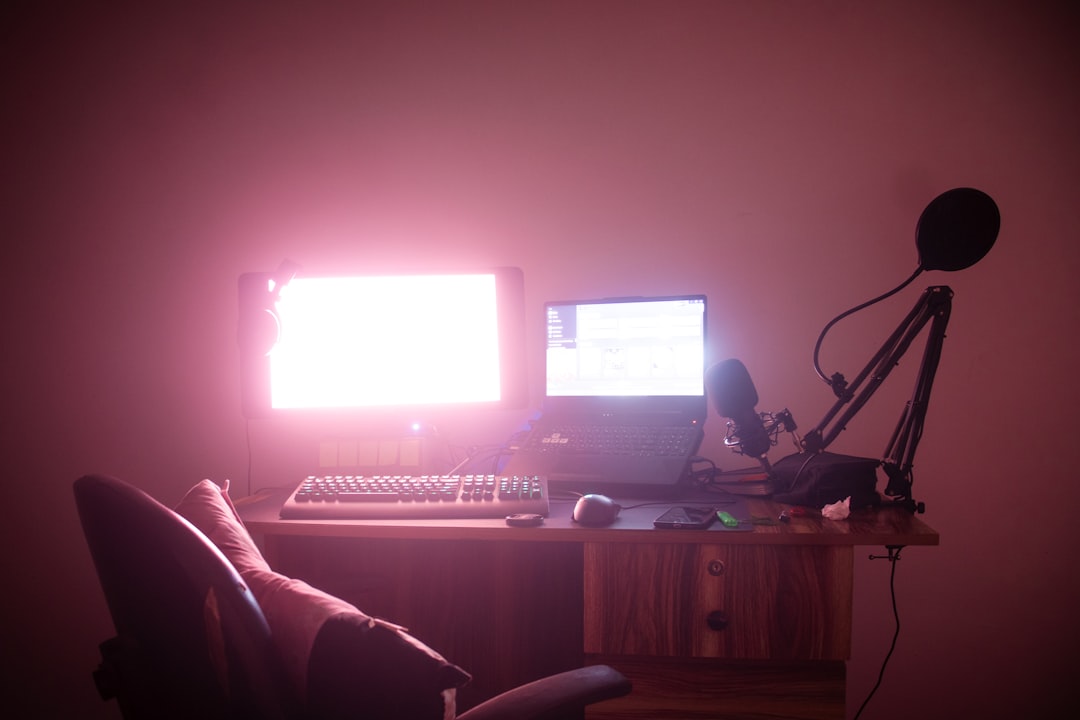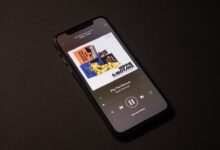Starting Your Own YouTube Radio Station: A Beginner’s Guide

Radio’s reach has surpassed conventional FM and AM frequencies in the current digital era. These days, anyone can launch their own radio station and reach listeners all over the world thanks to the growth of websites like YouTube. We will go over the fundamentals of launching a YouTube radio station in this post, along with the advantages, procedures, and success strategies. An audio-focused YouTube channel that resembles a conventional radio station is what’s known as a YouTube radio station.
Key Takeaways
- Starting a YouTube radio station requires understanding the basics and doing research on your niche and target audience.
- Creating a YouTube channel involves following a step-by-step guide and setting up your studio with the right equipment and software.
- Building a content strategy involves planning your shows and segments and recording your first episode using tips and techniques.
- Editing your audio requires following best practices and using the right tools to ensure high-quality content.
- Uploading and publishing your content involves optimizing for success and growing your audience through promotion and engagement, as well as exploring revenue streams and sponsorship opportunities.
YouTube radio stations, on the other hand, have the benefit of always being reachable to a global audience, unlike traditional radio. Your reach and potential impact will be increased as a result of being able to connect with listeners worldwide. Establishing a YouTube radio station has many advantages. First of all, it enables you to reach a large audience by sharing your love of music, talk shows, or any other audio content.
Content that speaks to your target audience and gives them entertainment, knowledge, or a sense of belonging is entirely up to you to produce & curate. In addition, launching a YouTube radio station is a fantastic way to advertise your company or develop your personal brand. You can become an authority in your field and build a devoted following by continuously creating excellent content.
Opportunities for partnerships, sponsorships, and even revenue generation may arise from this. Let’s look at the procedures involved in launching a YouTube radio station now that we are aware of the fundamentals and advantages of doing so. It’s critical to determine your target market and do your research on your niche before launching your YouTube channel. It will be easier for you to adapt your shows and segments to the interests and preferences of the people for whom your content is intended. Begin by determining the target audience for the content you intend to produce.
| Metrics | Description |
|---|---|
| Views | The number of times your video has been watched |
| Likes | The number of people who have clicked the thumbs up button on your video |
| Dislikes | The number of people who have clicked the thumbs down button on your video |
| Subscribers | The number of people who have subscribed to your channel |
| Comments | The number of comments left on your video |
| Shares | The number of times your video has been shared on social media |
| Engagement Rate | The percentage of viewers who have engaged with your video (likes, comments, shares) |
| Retention Rate | The percentage of viewers who continue to watch your video after the first few seconds |
| Watch Time | The total amount of time viewers have spent watching your video |
Knowing exactly who your target audience is will help you conduct research to learn more about their needs, habits, & preferences. Are you targeting music enthusiasts, fans of a particular genre, or people interested in a particular topic? You can conduct research on your niche with the aid of a number of tools and resources. By providing useful demographic data about their users, social media sites like Facebook & Twitter can help you better understand the people who make up your target market.
To find trending subjects and search terms associated with your niche, you can also utilize keyword research tools such as SEMrush or Google Trends. Establishing your YouTube channel is the next step after you have a firm grasp of your niche and target market. To get started, take these actions: 1. Log in to YouTube: To access YouTube, just use your current Google account credentials if you already have one.
If not, sign in to YouTube after making a new Google account. 2. After logging in, select your profile picture located in the upper right corner of the screen by clicking on the “Create a channel” button. Choose “Create a channel” from the drop-down menu. 3.
Pick a name for your channel: Give your YouTube radio station a name that accurately describes your material and appeals to your intended listenership. Make it brief, memorable, and simple to spell. 4. Personalize your channel by adding a banner and channel icon that reflect your radio station’s theme or brand. To give your audience a quick rundown of what to expect from your content, you can also include a channel description. 5.
Boost your channel’s visibility by including pertinent keywords and details about your radio station in the “About” section. By doing this, YouTube will be better able to comprehend your content & suggest it to the appropriate users. 6. Enable monetization (optional): You must enable monetization in your YouTube settings if you intend to monetize your channel with ads or other income sources. By doing this, you’ll be able to profit from your content.
Investing in the appropriate hardware & software is essential to achieving the highest quality audio output for your YouTube radio station. For studio setup, you’ll need the following items: 1. Buy a top-notch microphone that records audio with clarity and crispness. Due to their ease of setup and high sound quality, USB microphones are a popular option for novices. 2. Headphones: When recording and editing, use closed-back headphones to monitor your audio. This will assist you in identifying any unwanted background noise or audio problems.
Three. Audio Interface: In order to link your XLR microphone to your computer, you’ll need an audio interface. Your computer can process the digital signal produced by this device, which transforms the analog signal from your microphone. 4. Pop Filter: A pop filter helps lessen plosive sounds that can distort your audio, like “p” and “b” sounds.
The purpose of placing it in front of the microphone is to shield the microphone capsule from airborne debris. 5. Acoustic Treatment: If you want to reduce echo and enhance sound quality in your studio, think about implementing acoustic treatment. This can involve arranging diffusers, bass traps, and foam panels thoughtfully throughout the space.
There are various software options available for audio recording and editing. A well-liked free program with some basic editing & recording features is called Audacity. Consider investing in paid software like Logic Pro or Adobe Audition if you need more sophisticated features. The arrangement of your equipment and the room’s acoustics should be considered when setting up your studio. Achieve the best possible sound quality by positioning your microphone at the right distance and angle.
To determine the optimal configuration for your particular setting, try out various placements and test your audio. Your YouTube radio station will not succeed unless it has a clear content strategy in place. Consistency, engagement, and organization are all facilitated by it. The following steps will assist you in organizing your segments & shows:1.
Establish your format: Choose your radio station’s format. Have a clear format in place to help you organize your content and give your listeners a consistent experience. Will your episodes be music-focused, talk-based, or a combination of both? Will there be specific segments or themes for each podcast? 2.
Investigate and select content: Take your time finding & selecting material that speaks to the interests of your target market. This can involve discussions, interviews, music playlists, and instructional sections. With every episode, try to give your listeners something of value and some entertainment.
Three. Prepare your shows & segments ahead of time by putting together a content calendar. By doing this, you’ll maintain organization and guarantee a regular release schedule.
When organizing your content, take into account elements like holidays, noteworthy occasions, or popular subjects. 4. Interact with your audience: Motivate them to take part in and interact with your material. You can accomplish this by requesting comments and suggestions, holding Q&A sessions, or holding live chats. Creating a community around your YouTube radio show will encourage listener loyalty and draw in new ones.
It can be scary and exhilarating to record your first episode. You can maximize your recording session by using the following strategies and pointers:1. Create a script or outline: Before pressing the record button, work on your episode’s script or outline. Maintaining focus & a seamless content flow will be facilitated by doing this. That being said, feel free to improvise & incorporate some spontaneity into your recording. 2.
Warm up your voice: Preparing your voice for recording is crucial, just like for any other performance. Practice your voice, sip on warm water, and stay away from foods and beverages that might irritate or dry out your throat. 3. Employ good microphone technique: To get the best possible sound quality, place your microphone at the right distance & angle. Keep your mouth away from the microphone and be aware of any handling noise. 4.
Talk with confidence and clarity: Project your words with clarity & enunciation. To give your audience a more personal and interesting experience, pretend that you’re talking to a friend or a small gathering of people. 5. Take breaks when necessary: During your recording session, don’t be afraid to stop and rest if you’re feeling tired.
Taking short pauses is preferable to pushing through and producing shoddy audio. It’s time to edit your audio after your episode has been recorded to get the best possible sound quality. To assist you with the editing process, consider the following resources & best practices:1. Eliminate unwanted background noise from your audio by using noise reduction tools or filters. This includes any background noise that might divert your audience, such as hums or hisses. 2. Remove pauses & errors from your recording: Remove any pauses, errors, or awkward moments.
Maintaining a polished and seamless content flow will be made easier with this. 3. Modify volume levels: Make sure your audio is at the same volume all the way through the episode. To balance the loud and soft portions of your recording, apply compression and normalization techniques. 4. When appropriate, add music and sound effects to your episodes to make them better.
This can enhance the tone, serve as a segment transition, or give your content a unique flair. A variety of tools are available for editing audio, ranging from more sophisticated programs like Adobe Audition or GarageBand to free alternatives like Audacity. Try out several tools to determine which one best fits your editing needs and preferences.
After audio editing, it’s time to post your work to YouTube and make it public. The following are some best practices for making your content successful:1. Create a title that piques the interest of potential listeners by coming up with a catchy and informative title for your episode. For better searchability, add pertinent keywords. 2.
Make your description stand out: Use the space provided to describe your episode in brief so that viewers will be compelled to click through & start listening. Add timestamps to the various parts or subjects covered in the episode. 3. To help YouTube understand your episode’s content & suggest it to the appropriate audience, add relevant tags. Utilize pertinent keywords and phrases in your tags to increase discoverability. 4. Make visually appealing thumbnails that effectively convey the episode’s content to grab viewers’ attention.
To attract the attention of possible listeners, use bold text, vivid colors, and high-quality images. 5. Plan out the uploads you will make: Developing a following requires consistency. To guarantee a regular release schedule and maintain your listeners’ interest, plan ahead for your uploads. Building an audience on YouTube requires actively promoting your channel and interacting with viewers.
The following advice will assist you in this:1. Share on social media: Use Facebook, Twitter, & Instagram to advertise your episodes. Inspire your followers to listen and subscribe by writing interesting posts and sharing excerpts of your work. 2. Work together: To increase your reach, team up with other YouTubers or content producers in your niche. This can involve working together on particular episodes or projects, making cameo appearances on their channels, or engaging in cross-promotion. 3.
Interact with your viewers by answering their questions, sending them messages, and soliciting their opinions. Make them feel important & heard by demonstrating a sincere interest in their ideas and opinions. 4. Request that your audience subscribe to your channel and tell their friends and followers about your content in order to promote channel subscriptions and shares. To promote interaction, incorporate calls to action into the descriptions of your episodes. Although it takes time and work to create a community around your YouTube radio station, you can draw in a devoted & devoted audience by consistently promoting it & engaging with it. You might think about making your YouTube channel profitable after your radio show has amassed a sizable following.
Consider looking into the following revenue sources & sponsorship opportunities: 1. Ad revenue: To make money from the advertisements that appear on your videos, enable monetization on your YouTube channel. The quantity of views, interaction, and bids from advertisers are some of the variables that will affect how much money you make. 2.
Sponsorships: Assist businesses or brands that fit with your target market & content. Product placements, endorsements, and sponsored segments can all fall under this category. To preserve credibility, be open & honest with your audience about sponsored content. 3. Creating and marketing items associated with your YouTube radio station is a good way to generate revenue. Products that appeal to your target market can be t-shirts, mugs, stickers, or anything else. 4.
Fundraising and donations: To support your channel, you might think about starting a crowdfunding campaign or taking donations from your especially devoted viewers. Sites like Ko-fi and Patreon can make this easier. It’s crucial to find a balance between making money and preserving the authenticity and caliber of your content when investigating monetization options. In order to guarantee a satisfying and captivating experience, always put your audience’s needs & interests first. To sum up, launching a YouTube radio station can be a fruitful and satisfying project.
You can create a successful channel that appeals to listeners worldwide by identifying your target audience, producing high-quality content, & interacting with your viewers. As always, try to improve, remain consistent, and adjust in response to criticism. Best of luck with your YouTube radio station endeavors!
If you’re interested in starting your own YouTube radio station, you’ll definitely want to check out this informative article on howtostart.digital. It provides a step-by-step guide on how to get your station up and running, from choosing the right equipment to creating engaging content. Whether you’re a seasoned broadcaster or just starting out, this article is a valuable resource that will help you navigate the world of YouTube radio. Don’t miss out on the insights and tips shared in this article!
FAQs
What is a YouTube radio station?
A YouTube radio station is a channel on YouTube that streams audio content, similar to a traditional radio station. It can be accessed by anyone with an internet connection and can be listened to on any device that supports YouTube.
What equipment do I need to start a YouTube radio station?
To start a YouTube radio station, you will need a computer, a microphone, and audio editing software. You may also need a mixer, headphones, and a sound card, depending on the complexity of your setup.
What kind of content can I broadcast on my YouTube radio station?
You can broadcast any kind of audio content on your YouTube radio station, including music, talk shows, interviews, and podcasts. However, you must ensure that you have the necessary licenses and permissions to broadcast copyrighted material.
How do I set up a YouTube radio station?
To set up a YouTube radio station, you will need to create a YouTube channel, set up your audio equipment, and start broadcasting. You will also need to promote your channel to attract listeners and build your audience.
How do I attract listeners to my YouTube radio station?
To attract listeners to your YouTube radio station, you can promote your channel on social media, collaborate with other content creators, and engage with your audience through comments and live chats. You can also offer exclusive content and giveaways to incentivize listeners to tune in.




